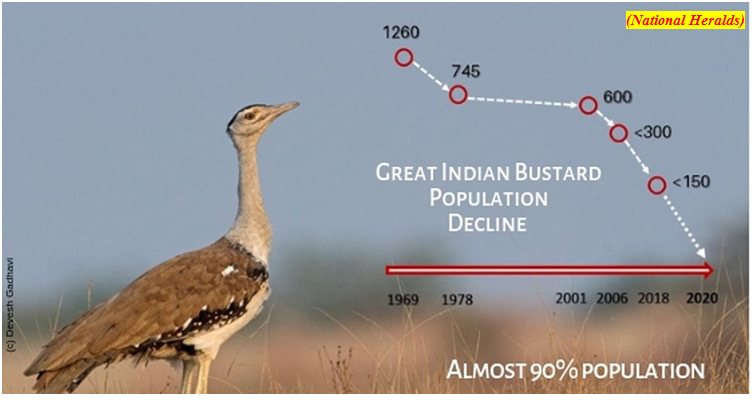160-200 mn Indians could be exposed to lethal heat waves annually: World Bank report (GS Paper 3, Environment)

Why in news?
- Recently, the World Bank launched a report titled, “Climate investment opportunities in India’s cooling sector”.
Details:
- From 2030, 160 million to 200 million people can be exposed to lethal heatwaves in India every year, and nearly 34 million Indians will face job losses due to heat stress-related productivity decline.
- By 2037, the demand for cooling is likely to be eight times more than the current level, as per the report.
- In this scenario, it is imperative for India to deploy alternative and innovative energy efficient technologies for keeping spaces cool.
Shifting to energy-efficient pathway:
- Investing in India’s cooling sector could open an investment opportunity of $1.6 trillion by 2040, besides reducing greenhouse gas emissions significantly and creating 3.7 million jobs.
- With the demand for cooling shooting up, there will be a demand for a new air-conditioner every 15 seconds, leading to an expected rise of 435% in annual greenhouse gas emissions over the next two decades. Thus, there is a need to shift to a more energy-efficient pathway which could lead to a reduction in expected CO2 levels.
Roadmap:
- The report proposes a road map to support New Delhi’s India Cooling Action Plan (ICAP), 2019, through new investments in three major sectors:
- building construction
- cold chains
- refrigerants
- Adopting climate-responsive cooling techniques as a norm in both private and government-funded constructions can ensure that those at the bottom of the economic ladder are not disproportionately affected by rising temperatures.
- The report suggests that India’s affordable housing programme for the poor, the Pradhan Mantri Awas Yojana (PMAY), can adopt such changes on scale.
District cooling:
- It proposed enacting a policy for “district cooling”, which could lead to the consumption of 20-30% less power than the most efficient conventional cooling solutions.
- District cooling technologies generate chilled water in a central plant which is then distributed to buildings via underground insulated pipes.
- This brings down the cost for providing cooling to individual buildings. Apart from this, guidelines for implementation of local and city-wide urban cooling measures such as cool-roofs should also be considered.
Way Forward:
- India’s cooling strategy can help save lives and livelihoods and reduce carbon emissions.
Scientists revive 48,500-year-old Zombie Virus buried in ice in Russia
(GS Paper 3, Science and Tech)
Why in news?
- Climate change due to global warming is rapidly thawing the ancient permafrost, which may pose a new threat to humans, according to researchers who revived nearly two dozen viruses, including one frozen under a lake more than 48,500 years ago.

New pathogens:
Way Forward:
- The potential revival of a virus that could infect animals or humans is much more problematic, they said, warning that their work can be extrapolated to show the danger is real.
SC seeks Centres response on evolving a programme to protect Great Indian Bustard
(GS Paper 3, Environment)
Why in news?
- Recently, the Supreme Court sought the government’s response about evolving a “Project Great Indian Bustard” conservation programme like the Project Tiger to bring attention to the peril faced by the critically endangered bird.
- Project Tiger is touted by the government as one of the most successful conservation programmes for a single species in the world.
Background:
- The court is hearing a series of petitions highlighting the numerous deaths of Great Indian Bustards due to power transmission lines criss-crossing their habitat in Gujarat and Rajasthan.

Key directions by the Special Bench:
- In its order, the Special Bench, directed the Chief Secretaries of Gujarat and Rajasthan to undertake and complete a comprehensive exercise within four weeks to find out the total length of the transmission lines in question and the number of bird diverters required in the priority areas of the birds’ habitats.
- The court was not, however, for the time being, ready to agree with the Centre’s plea to expand its expert committee formed in April 2022 to study the problem.
- The government wanted the court to allow the Additional Secretary of the Renewable Energy Ministry and the Chief Operating Officer of Central Transmission Utility of India Ltd. to join the committee as domain experts on transmission lines. Instead, the Bench said the expert committee was free to consult the firm’s officer for his expert opinion for now.
About Great Indian bustard (GIB):
Threats:
- Gaming and hunting had wiped out most of its population till 1972 when hunting was banned.
- Its drastic falling numbers since then, from 1,000 in 1980 to less than 150 now has been attributed to the shrinking of its habitat due to the conversion of grasslands and scrublands for agricultural and industrial use, attack by feral dogs and wild pigs, and collision with windmills.




